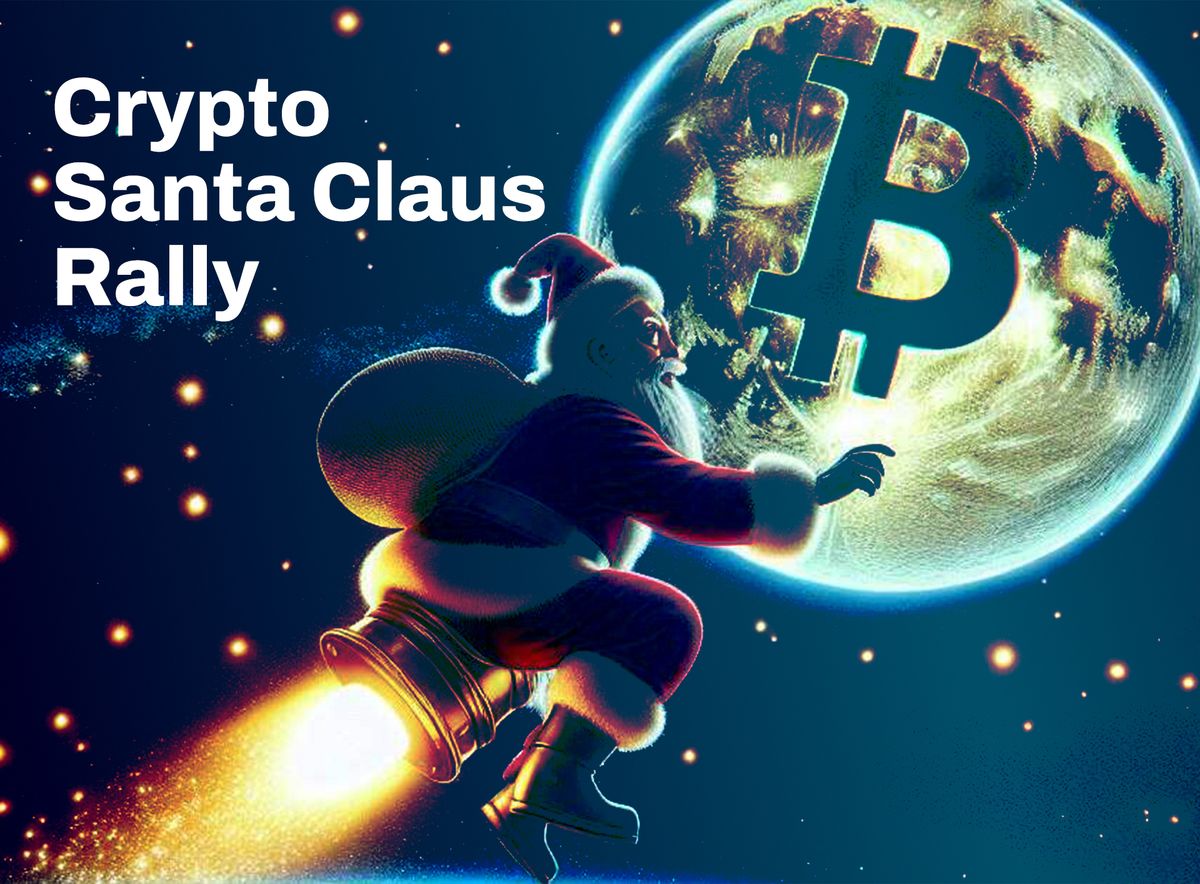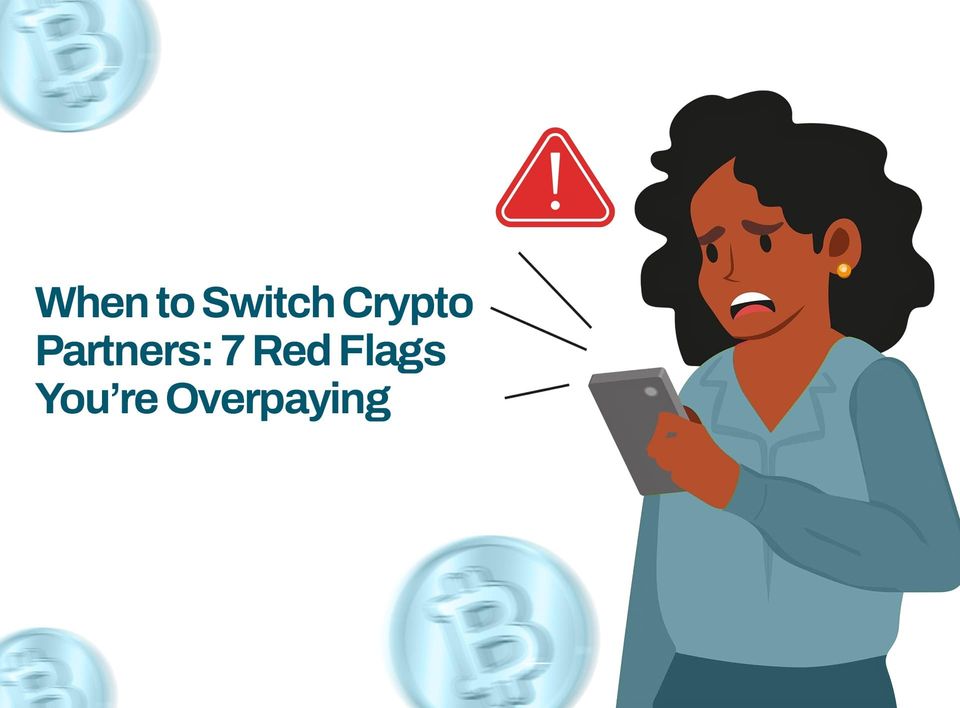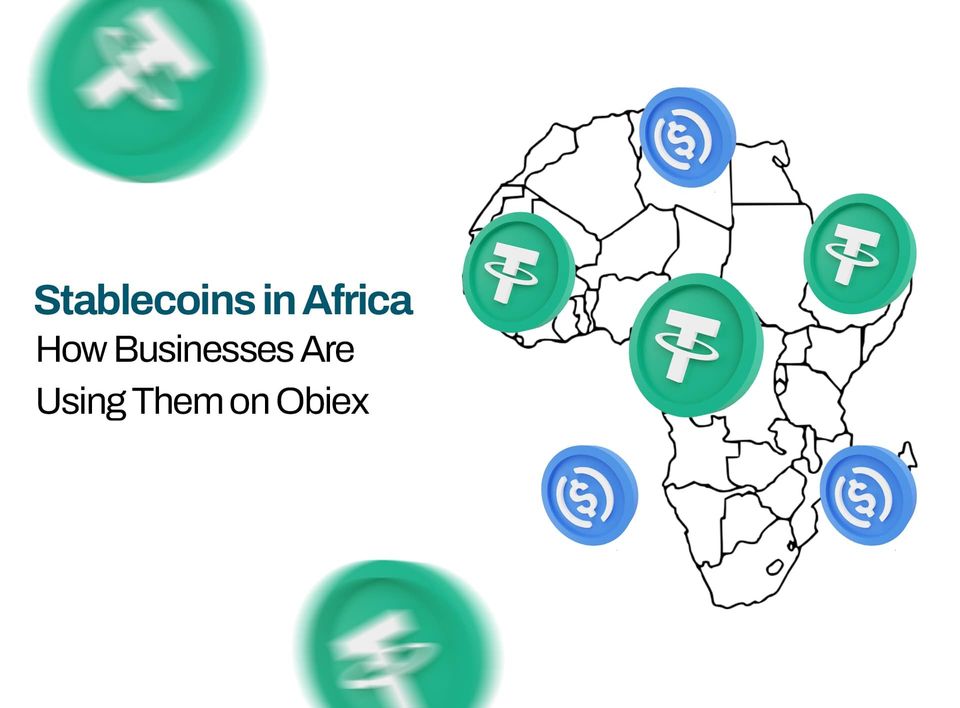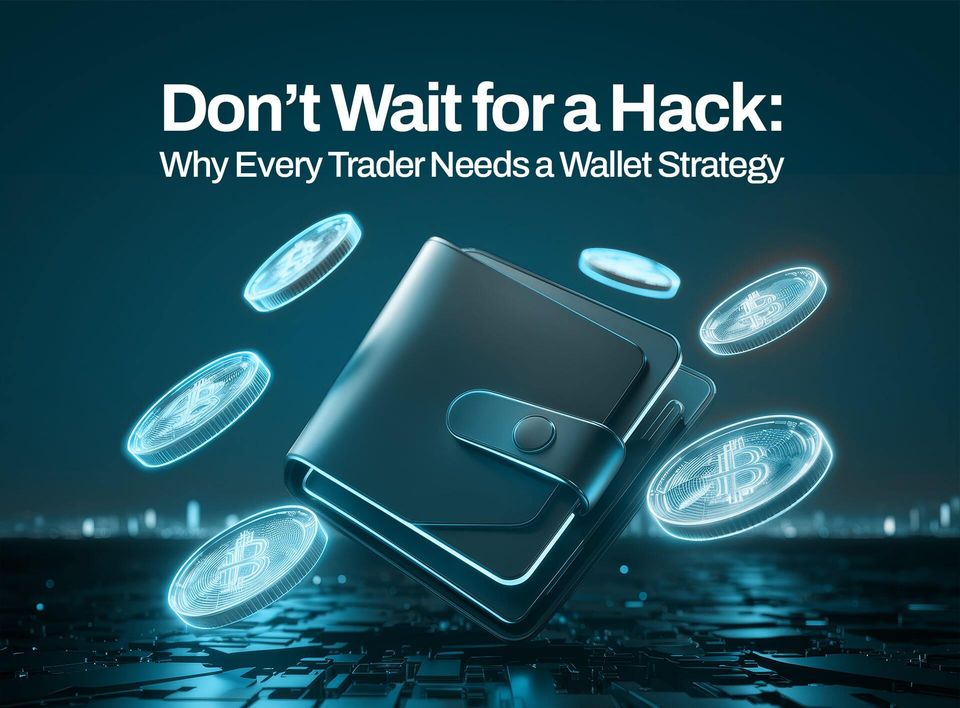What is the Crypto Santa Claus Rally?
The Santa Claus Rally happens when the stock market goes up in the week between Christmas and New Year.

Table of Contents
- What is Santa Claus Rally?
- The History of Santa Claus Rally
- Santa Claus Rally in Cryptocurrency
- How To Trade Crypto During The Santa Claus Rally
- FAQs
Have you ever heard of the Crypto Santa Claus Rally?
It's a fascinating phenomenon that refers to the tendency of prices to rise as we approach the end of the year, creating positive vibes for investors.
Some people believe it's purely psychological, while others suspect deeper financial factors might be at play.
Whatever the case, historical data shows that stocks and crypto tend to enjoy gains in the final days of the year and even into January.
What is Santa Claus Rally?
The Santa Claus rally has its roots in the historical trend of the stock market experiencing an upswing over the final five trading days of the year and the initial two trading days of the new year.
Yale Hirsch was the first to document this pattern back in 1972 within the pages of the "Stock Trader's Almanac."
According to his findings, the S&P500 showed an average increase of 1.5% during this seven-day period from 1950 to 1971.
The consistency of this pattern has endured since 1950, with the broad market index consistently rising around 1.3%.
Over the past 45 years, the market has witnessed an ascent in over 34 instances, translating to a success rate exceeding 75%.
Hirsch went beyond viewing the Santa Claus rally as a whimsically named event occurring frequently; he regarded it as a potential precursor for the market's trajectory in the upcoming year.
His belief was summarised in the saying, "If Santa Claus should fail to call, bears may come to Wall and Broad," pinpointing the location of Wall and Broad, which houses the New York Stock Exchange (NYSE).
Hirsch identified three indicators for gauging future market performance. These were the Santa Claus rally, the market's performance in the first five days of the new year, and the January barometer, which measures the market's early-year performance.
Among these indicators, the Santa Claus rally stands out as the most popular and closely observed.
The History of Santa Claus Rally
In 2018, the S&P 500 concluded the year with a 6.6% upswing, specifically after Christmas on the 24th.
Interestingly, this surge came after the index had experienced a dip on January 3, the third day of the new year, marking the lowest point for the market that year.
Notably, a parallel scenario happened in 2008, during the throes of the Great Recession, which was spurred by an economic crisis. Despite the larger bear market, the Santa Claus rally played a pivotal role.
Over the seven-day period, the S&P 500 witnessed a notable 7.5% increase. However, this upward trend was short-lived, as the market would subsequently crash in the early second quarter of 2009, reaching its nadir on March 9.
Remarkably, both in 2008 and 2018, the Santa Claus rallies accurately foreshadowed a Bull Market for the following year. The broad market index saw a 23% increase in 2009 and a 29% surge in 2019.
Yet, it's crucial to note that the Santa Claus rally doesn't consistently serve as a foolproof predictor of growth in the ensuing year. A case in point is 2021, where the S&P 500 posted a 1.4% increase over a seven-day span, only to witness a market peak on January 3.
Subsequently, it entered a Bear Market in June, plummeting over 20% as the Federal Reserve Board aggressively raised interest rates.
Looking at the broader trend, since 1994, the stock market has risen 23 times during the Santa Claus rally period.
Of these occurrences, the S&P 500 experienced a favourable year 18 times the following year. Conversely, during the six instances when stocks fell over the Santa Claus rally period, the market declined in four subsequent years.
This track record contributes to the Santa Claus rally's reputation as a surprisingly reliable market predictor.
Santa Claus Rally in Cryptocurrency
Investors often think December is a good month for regular stocks, and they hope this positivity will also boost Bitcoin and other cryptocurrencies.
However, the reality isn't always as expected.
Bitcoin and other cryptocurrencies haven't consistently increased in December during what people call the Santa Claus rally.
For example, in 2021, Bitcoin reached a record high in November but decreased in December.
Looking at the data over the past 20 years, there were only a few times when the market actually went up in December. Most of the time, the markets either stayed calm or moved downwards.
One reason for this might be that investors take a break during December to celebrate the holidays, so there's less activity in the markets.
It's important to understand that even if traditional stocks experience a Santa Claus rally, it doesn't guarantee that Bitcoin and other cryptocurrencies will perform exceptionally well in December.
What Causes The Santa Claus Rally?
The Santa Claus Rally happens when the stock market goes up in the week between Christmas and New Year. There isn't one clear reason for it, but a few things might explain why it occurs:
1. Less Trading Activity: Many big institutions take a break during the week after Christmas, so there's less buying and selling. This makes the market more jumpy, and everyday people who invest (called retail investors) can have more influence.
2. Expectation of January Boost: Some investors buy stocks, hoping the market will increase in January. This is known as the "January Effect," and it might happen because people invest money after taking losses for tax reasons in December.
3. Using Tax-Loss Money: Some investors might use the money they saved by taking tax losses at the end of December to invest.
4. Positive End-of-Year Feeling: The time between Christmas and New Year can make people feel optimistic about the upcoming year. This good feeling might make them more likely to invest in the stock market.
5. Christmas Bonuses and Gifts: Some people receive extra money from Christmas gifts or year-end bonuses. They might invest this money in stocks.
6. Belief in the Rally: If many people believe the Santa Claus Rally is real, they might invest in a way that makes it come true. This is called a self-fulfilling prophecy.
How To Trade During The Santa Claus Rally: Key Strategies
As previously explained, the "Santa Claus Rally" refers to a historical pattern where financial markets, including cryptocurrency markets, experience a surge in price during the final trading week of December and sometimes into the first two trading days of January.
In the context of Bitcoin and other cryptocurrencies, this rally may present profitable trading opportunities due to heightened market activity and volatility.
Below is an in-depth explanation of the key strategies:
1. Entry Timing: Leveraging Historical Patterns
Historical Context: The Santa Claus Rally is tied to psychological and seasonal factors, such as year-end portfolio adjustments by institutional investors, optimism around the new year, and increased retail trading activity during the holiday season.
Why Christmas Day?: Historically, the rally tends to kick off around Christmas Day and gathers momentum through the following week. Entering the market during this early phase can allow traders to position themselves ahead of broader market moves.
How to Execute:
Use technical indicators like moving averages or momentum oscillators (e.g., RSI or MACD) to confirm bullish trends around this time.
Monitor trading volumes, as increased activity can signal the start of the rally.
2. Stop Losses: Managing Bitcoin’s Volatility
Bitcoin's Dual Nature: While the rally presents upside potential, Bitcoin's inherent volatility can lead to sharp and unexpected price swings.
Importance of Stop Losses:
A stop-loss order helps limit losses by automatically selling your position if the price drops to a predetermined level.
For example, if Bitcoin's price is $90,000 and your target gain is $92,000, a stop loss at $88,500 ensures protection against significant downside risks.
Setting Optimal Stop Losses:
Use Average True Range (ATR) to calculate a volatility-based stop loss, which adjusts to Bitcoin’s price fluctuations.
Place your stop loss below key support levels or moving averages to reduce the chance of premature exits caused by normal market noise.
3. Macro Awareness: Staying Alert to External Catalysts
Potential Catalysts:
Crypto ETFs: Approval or regulatory decisions on cryptocurrency ETFs can trigger significant price movements due to increased institutional interest and adoption.
Geopolitical Events: Any developments—such as changes in monetary policy, global economic instability, or shifts in regulatory frameworks—could amplify market volatility.
How to Stay Prepared:
Follow news feeds and platforms like Twitter (now X), crypto forums on Reddit, or financial news websites for real-time updates.
Use economic calendars to track events like U.S. Federal Reserve announcements, which can indirectly affect Bitcoin's price.
Incorporating Macro Insights into Trading:
Consider scaling into positions when a potential catalyst aligns with the rally's start.
Hedge your portfolio if negative catalysts, such as regulatory crackdowns, emerge unexpectedly.
Additional Tips:
- Diversify: Don’t put all your funds into one position; consider a mix of high-cap coins (e.g., Bitcoin, Ethereum) and mid-to-low-cap altcoins that may outperform during the rally.
- Use Leverage Sparingly: If trading on margin, be cautious, as the same volatility that can amplify profits can also magnify losses.
- Monitor Market Sentiment: Sentiment indicators, like the Fear & Greed Index, can provide valuable insights into whether the rally is driven by genuine optimism or speculative excess.
To Recap
- Similar to other calendar effects like the January effect or the popular adage "Sell in May and Go Away," substantial evidence supports the existence of the Santa Claus rally. This phenomenon, observed over the last five days of the year and the beginning of the subsequent year, tends to see a rise in prices.
- Drawing from the market behaviour in 1994, the Santa Claus rally's performance serves as a reliable indicator of the market's direction in the upcoming year. However, it's crucial not to confuse causality with correlation in this context.
- While the Santa Claus rally typically occurs and often provides insights into the market for the following year, assuming that this pattern will invariably persist is a mistake.
- Market sentiment is dynamic and subject to change. Anticipating the rally may lead investors to react differently, and market participants could adjust their strategies based on the expectation of a Santa Claus rally.
FAQS
Q: What is the Crypto Santa Claus Rally?
A: The Crypto Santa Claus Rally is a phenomenon where cryptocurrency prices tend to rise as the year ends, creating positive sentiments for investors.
Q: What is the Santa Claus Rally in traditional markets?
A: The Santa Claus rally is a historical trend in traditional markets where stock prices tend to rise over the final five trading days of the year and the first two trading days of the new year.
Q: What is the history behind the Santa Claus Rally?
A: The Santa Claus Rally has been documented since 1972, with historical data showing an average increase in the S&P 500 during the seven-day period. It is often considered a potential indicator for the market's trajectory in the upcoming year.
Q: Has the Santa Claus Rally accurately predicted market trends?
A: In instances such as 2008 and 2018, the Santa Claus Rally accurately foreshadowed a Bull Market for the following year. However, it is not foolproof, as demonstrated by market fluctuations in 2021.
Q: How has the Santa Claus Rally performed in the cryptocurrency market?
A: While December is generally positive for regular stocks, the same doesn't consistently apply to Bitcoin and other cryptocurrencies. Cryptocurrencies may not always experience a rally during the Santa Claus period.
Q: What causes the Santa Claus Rally?
A: The Santa Claus Rally may be influenced by factors such as reduced trading activity, expectations of a January boost, the use of tax-loss money for investment, positive end-of-year sentiments, and extra money from Christmas bonuses or gifts.
Q: Does the Santa Claus Rally have a psychological aspect?
A: Yes, the positive feeling during the holiday season and the belief in the Santa Claus Rally itself can contribute to a self-fulfilling prophecy, where investor behavior aligns with the expectation of a rally.
Q: Why might cryptocurrencies not consistently follow the Santa Claus Rally pattern?
A: Cryptocurrencies may not consistently follow the pattern due to lower December market activity, potential investor breaks during the holidays, and the fact that positive trends in traditional stocks do not guarantee positive performance in cryptocurrencies.
Q: How reliable is the Santa Claus Rally as an indicator for the upcoming year?
A: While the Santa Claus Rally often provides insights into the market for the following year, it's essential to recognize that market sentiment is dynamic, and the pattern may not persist consistently.
Q: Should investors rely solely on the Santa Claus Rally for decision-making?
A: While the Santa Claus Rally is a well-documented phenomenon, investors should avoid relying solely on it for decision-making. Market dynamics are complex, and other factors should be considered alongside historical patterns to make informed investment decisions.
Disclaimer: This article was written to provide guidance and understanding. It is not an exhaustive article and should not be taken as financial advice. Obiex will not be held liable for your investment decisions.




